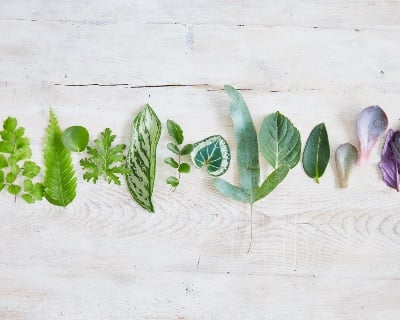Houseplant design principles: colour
Colours evoke emotions, so design your displays according to the mood you want to create
Cool colours such as white evoke calm and space while warmer shades promote a sense of cosiness. Use colour to set the mood of your space – and don't forget that it can come from both the plants and their pots.
How do colours work?
Colours in isolation behave differently from colours in combination, and the colour wheel shows how these relationships work. In between the primary colours of red, blue and yellow lie all the shades they make in combination (so, for example, green sits between blue and yellow). Towards the centre are progressively lighter tints, while as the circle progresses outwards, the shades get darker.This article is adapted from the RHS Practical Houseplant Book.




